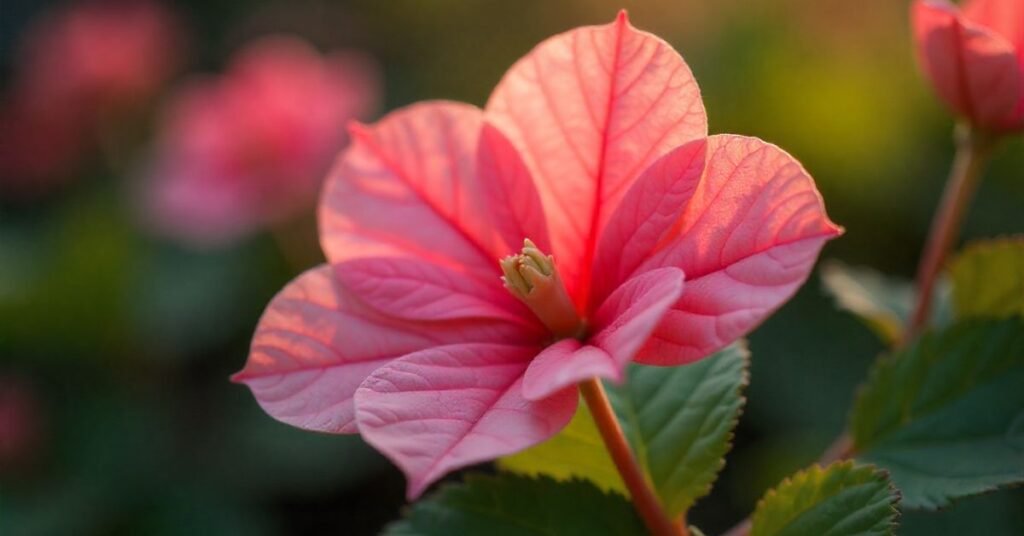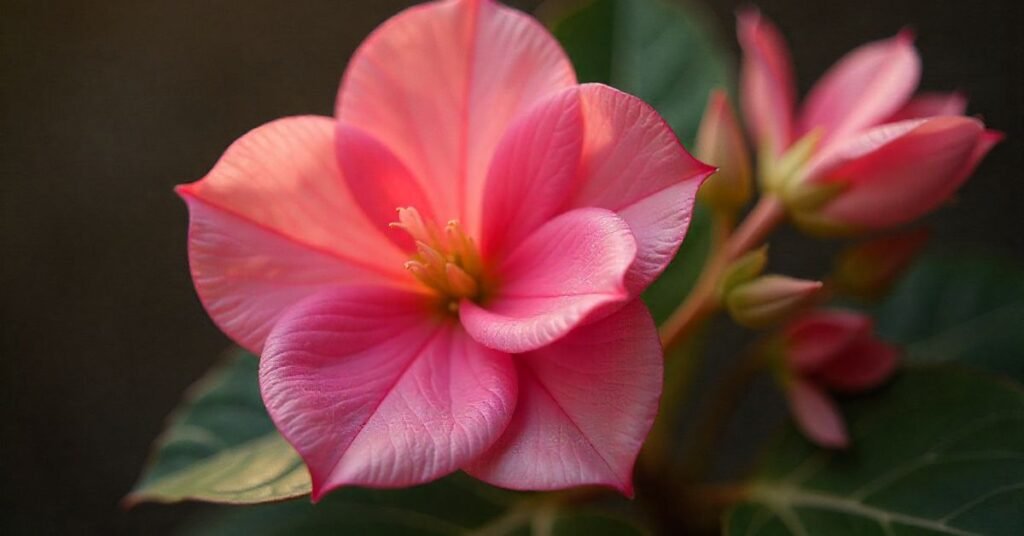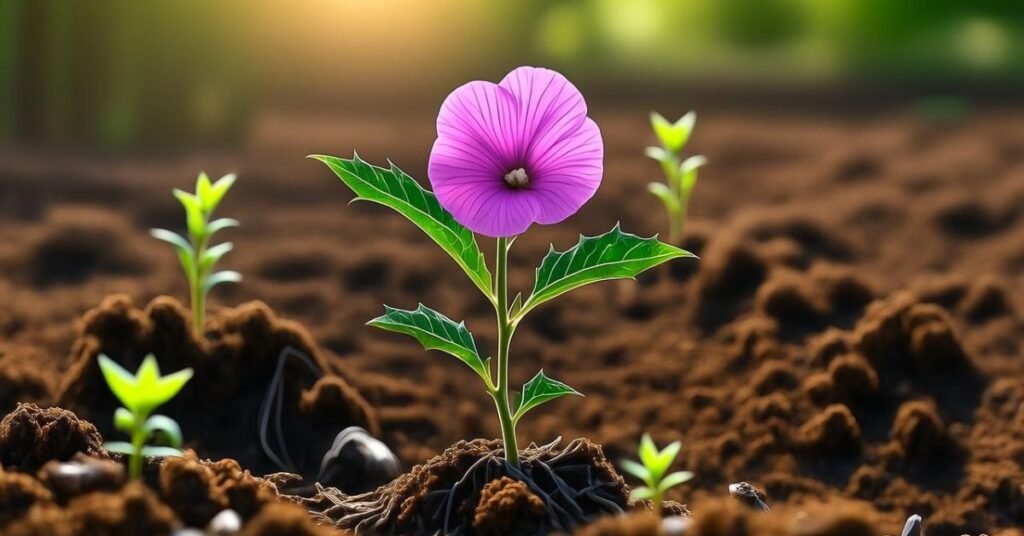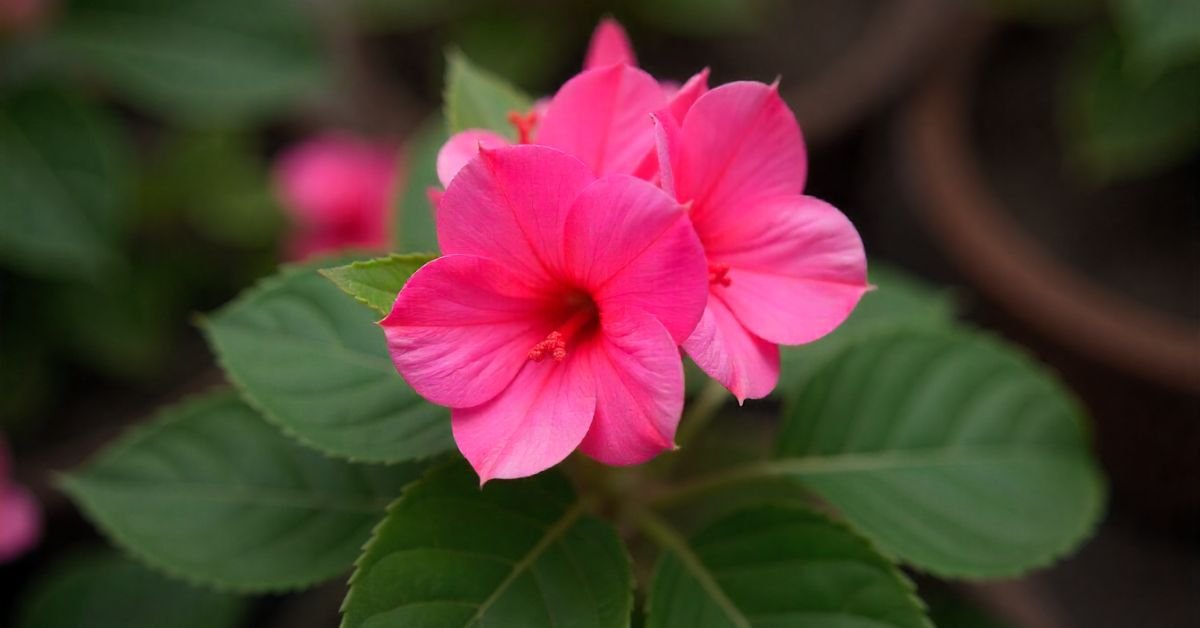Introduction
The Begonia pink plant is a beautiful, ornamental houseplant. It’s known for its soft pink blooms and lush, decorative leaves. This plant is popular for both indoor and outdoor spaces. It adds charm and color to any room or garden corner. Begonias are part of a large plant family with many varieties, but the pink one stands out for its elegance and easy care.
Love plants but don’t have much time? The Begonia pink plant might be perfect for you. It doesn’t demand much attention but gives back a lot of beauty. With just a little effort, you can keep it thriving year-round. Whether you’re a beginner or a seasoned gardener, this plant can easily fit into your routine.
To care for a Begonia pink plant, place it in bright, indirect sunlight. Water it when the topsoil feels dry, but don’t overwater. Keep it in well-draining soil and avoid letting the roots sit in water. A warm, humid environment helps it grow best. With the right care, you’ll enjoy vibrant pink flowers and healthy green leaves throughout the season.
Why Grow a Begonia Pink Plant?
Having a begonia pink plant brings joy and calm to your space. When it blooms, its pink blossoms seem to glow softly. Even its leaves can carry shades of pink or blush. The plant can fill a dull corner with color without needing full sun. It works well indoors near a window, or outdoors under partial shade.

Many varieties like Dragon Wing Pink, Bendigo Pink, Roseform Pink bring months of color once you learn how to care for them. The scent, the foliage, the flowers they all make the effort rewarding. If you enjoy plants that are beautiful but not too hard to keep alive, this is a great choice.
Caring for Your Begonia Pink Plant
- The Begonia pink plant likes bright, indirect light.
- Avoid direct sunlight; it can burn leaves and fade pink color.
- Light through a sheer curtain works well.
- Weak light makes the plant stretch and lose pink patterns.
- Use well-draining soil rich in organic matter.
- Mix peat, perlite, or bark for better drainage.
- Water when the top 1-2 inches of soil feels dry.
- Avoid soggy soil to prevent root rot.
- Increase humidity if the air is dry.
- Use a humidifier or place a water tray nearby.
- Keep temperatures between 18‑27 °C (65‑80 °F).
- Avoid cold drafts and temperatures below 15 °C (60 °F).
Light
Begonia pink plants love bright, indirect light. Too much direct sun can scorch the leaves and fade their pink color. Place the plant near a window with filtered sunlight. If kept in low light, the plant may grow leggy and lose its vibrant look.
Soil
Use light, well-draining soil for your begonia pink plant. A mix with peat, perlite, or coco coir works well. The soil should hold some moisture but never stay soggy. Good drainage keeps roots healthy and prevents rot.
Water
Water the plant when the top inch of soil feels dry. Avoid watering too often. Too much water can cause root rot. Always let excess water drain from the pot. Reduce watering in cooler months when the plant grows slower.
Humidity
Begonia pink plants prefer moderate to high humidity. Dry air can cause the leaves to brown at the edges. Mist the plant lightly or place a humidity tray nearby. You can also use a humidifier to keep moisture levels stable.
Temperature
Begonia pink plants grow best in warm spaces. Avoid cold or drafty areas. Ideal temperatures are:
- Minimum: 15°C (60°F)
- Ideal range: 18–27°C (65–80°F)
- Avoid: Sudden temperature drops
- Tip: Keep away from air conditioners or heaters
Potting
When potting your begonia pink plant, always choose a pot with drainage holes. This helps extra water escape so the roots don’t sit in soggy soil. Use a light soil mix that drains well. If the plant outgrows its pot or the soil gets hard and dry, it’s time to repot. Try to repot in spring when the plant is actively growing. Be gentle with the roots, and place the plant in a slightly bigger pot. After repotting, water it lightly and keep it in a warm spot.
Fertilizing
Begonia pink plants need some feeding during the growing season, which is spring and summer. You can use a liquid plant fertilizer that’s balanced or made to help flowers bloom. Mix it with water and feed the plant once every two to four weeks. Always follow the directions on the bottle and don’t overfeed, as too much fertilizer can damage the roots. In autumn and winter, you can stop fertilizing because the plant grows slowly or rests.
Common Problems & How to Fix Them

| Problem | What It Looks Like | How to Fix It |
| Yellow Leaves | Leaves turn yellow and fall off | Too much water. Let soil dry before watering again. |
| Brown Leaf Edges | Leaf tips or sides look dry and crispy | The air is too dry or the light is too strong. Increase humidity and move to softer light. |
| Faded Pink Color | Pink color is pale or missing | Not enough light. Move to brighter, indirect light. |
| Leggy Growth | Long, weak stems with few leaves | Light is too low. Give the plant more bright light. |
| No Flowers | Plant grows but doesn’t bloom | Needs more light or nutrients. Feed during the growing season. |
| Root Rot | Soft, black roots and droopy plant | The soil stays too wet. Use well-draining soil and water less. |
| Pests (like mealybugs) | White dots or webbing on leaves | Wipe leaves clean. Use gentle insect spray or neem oil. |
Popular Varieties of Begonia Pink Plant
There are many beautiful types of begonia pink plants. Some are grown for their flowers, while others are loved for their colorful leaves. One popular type is the Dragon Wing Pink, which has bright pink flowers and grows fast. Another favorite is Begonia Roseform Pink, known for its big, rose-like blooms. Begonia Pink Minx is special because its green leaves have silver and pink spots. Each variety has its own charm, but all of them bring a soft, elegant touch to any space.
Conclusion
In conclusion, the begonia pink plant is a beautiful and easy-to-care-for addition to any home or garden. Its vibrant pink flowers brighten up any space. The begonia pink plant thrives in shade and needs regular watering. With proper care, it can bloom for months. Choose the begonia pink plant for color, charm, and low maintenance.
FAQs
- What is a begonia pink plant?
The begonia pink plant is a flowering plant known for its bright pink flowers and attractive leaves. - How do I care for a begonia pink plant?
Keep it in indirect sunlight and water when the soil feels dry to the touch. - Can a begonia pink plant grow indoors?
Yes, it grows well indoors with proper light and humidity. - How often should I water my begonia pink plant?
Water it once the top inch of soil is dry, usually every few days. - Are begonia pink plants prone to pests?
They can attract pests like aphids and spider mites, so check regularly.


